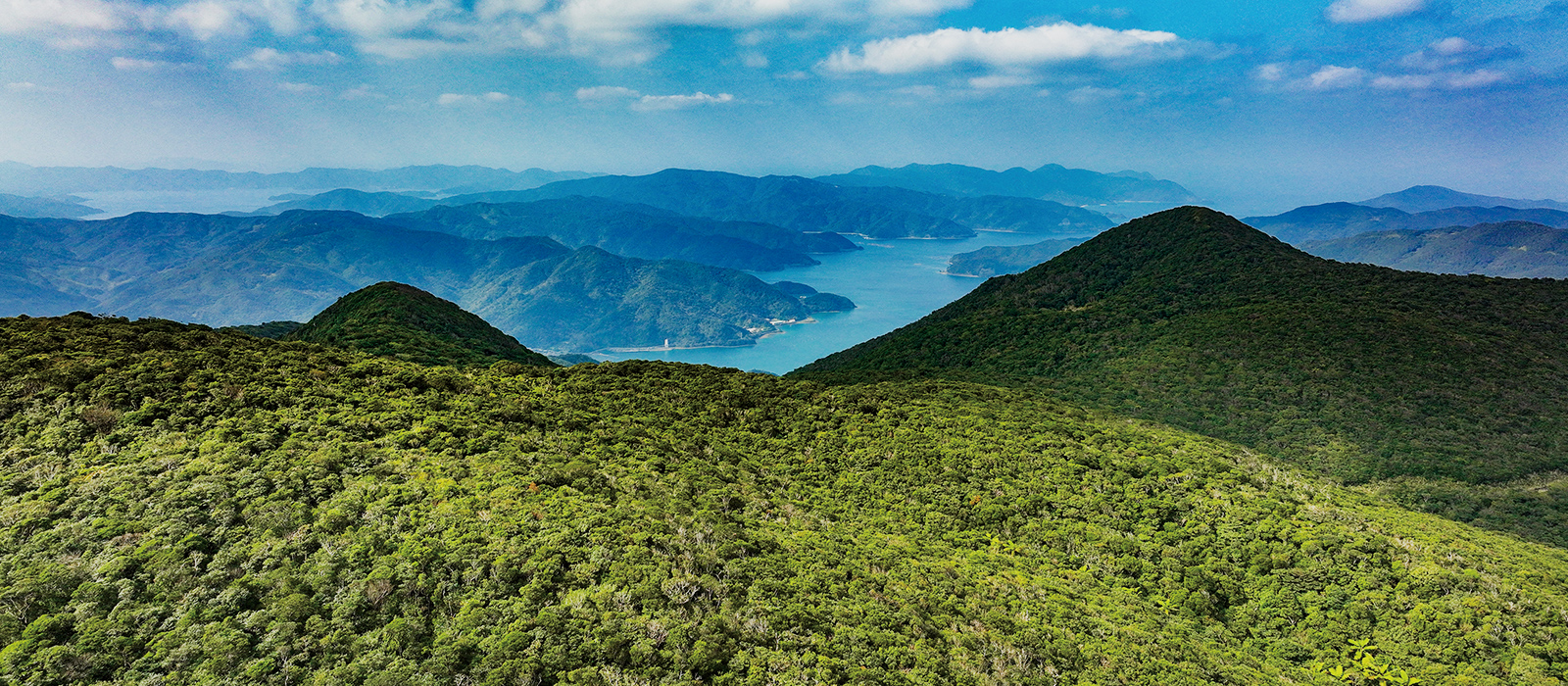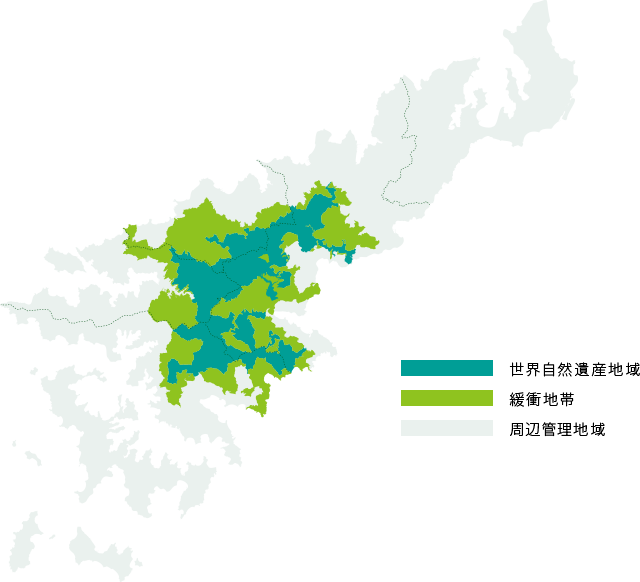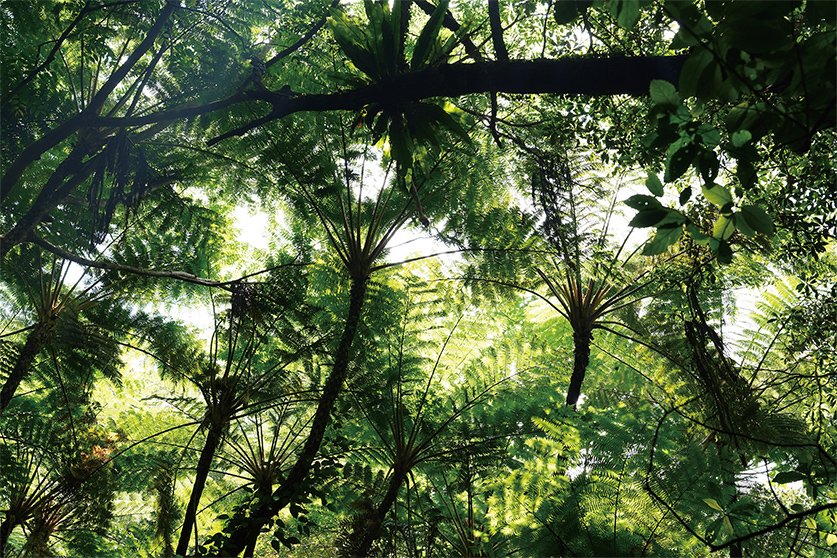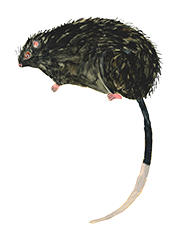The Amami Oshima Natural World Heritage Site

- TOP
- The Amami Oshima Natural World Heritage Site

4 Areas
Natural World Heritage “Amami-Oshima Island, Tokunoshima Island, Northern Part of Okinawa Island, and Iriomote Island”
On July 26, 2021, “Amami-Oshima Island, Tokunoshima Island, Northern Part of Okinawa Island, and Iriomote Island” were registered as a Natural World Heritage Site. The land area of the four Ryukyu Islands, located at the southern end of the Japanese archipelago, has been registered as a Natural World Heritage Site. Although the area of the Natural World Heritage Site is 42,698ha, less than 0.5% of Japan, there are 95 globally threatened species and 75 of them are endemic to these areas. With 1,881 vascular plants, it is a region with outstanding biodiversity even in Japan, one of the world’s biodiversity hotspots.


 Otton frog
Otton frog
 Amami Jay
Amami Jay
Amami-Oshima
Amami-Oshima Island
Amami-Oshima Island is the largest island in the Amami Islands. The terrain is complicated, including the highest peak of Mt. Yuwandake (694m), which has large undulations, deep valleys, and deeply indented coasts around the island. Many endemic species inhabit and grow in diverse environments, such as one of the largest subtropical rainforest in Japan, vast mangrove forests, and tidal flats that spread out at the mouth of rivers.
Tokunoshima
Tokunoshima Island
Tokunoshima Island is the second largest in the Amami Islands. Mt.Amagidake in the north and the mountain massif in the center of the island stretching from Mt.Inokawadake, the island’s highest mountain peak, to Mt. Inutabudake are covered with the subtropical rainforests. The abundant nature is a habitat for rare animals and plants, such as the Amami rabbit, the banded ground gecko, and the Tokunoshima spiny rat.
 View from the top of Mount Inogawadake
View from the top of Mount Inogawadake
Northern part of Okinawa Island
Northern part of Okinawa Island
The “Yambaru” forest, one of the largest subtropical rainforest in Japan spreads over Mt. Yonahadake and Mt. Nishimedake, where a wide variety of plants and animals live, such as the flightless Okinawa rail and Okinawa woodpecker.
 Okinawa rail
Okinawa rail
Iriomote Island
Iriomote Island
90% of Iriomote Island, the largest of the Yaeyama Islands in Okinawa Prefecture, is a subtropical jungle. Examples of its abundance of nature are the largest mangrove forest in Japan, the Iriomote cat and the crested serpent eagle, which are special natural monuments. The beauty of the crystal blue sea surrounding the island and the Sekisei Lagoon are breathtaking.
 Iriomote cat
Iriomote cat

Coexistence
Walk the Amami Forest
In Amami-Oshima Island, various efforts aiming at the coexistence of humans and nature have been made. The goals are to pass down a lifestyle and culture that are friendly to nature, to preserve the abundant biodiversity and to promote sustainable tourism. Let’s experience the lifestyle and culture of Amami-Oshima Island while admiring its world-class nature.
Part1
Amami-Oshima’s lifestyle is based on “Environmental culture,”
that is friendly to nature.

What nurtures the spirit and lifestyle of living with nature?
On Amami-Oshima Island, there are many communities facing the sea with their backs to Kamiyama (spiritual mountain) where the gods live. Behind the reef called “Ino” is considered the gods’ area. People have cultivated the fields between the mountains and the sea as being received the blessings of nature and the protection from the gods. Such unique climate has created culture and faith in the island deeply immersed in nature.
Living with blessings from the mountains, rivers, and sea
People have lived in harmony with nature between the mountains and the sea. You can see the traces left inside and outside the communities, where the relationship with nature has continued from long ago into the current lifestyle and customs.
 Oshima Tsumugi
Oshima Tsumugi
 Coral Stone Walls
Coral Stone Walls
 Fence Fishing
Fence Fishing
Amami’s religion, the respect for nature preserves the rich ecosystem
Many traditional festivals are held celebrating the belief in gods rooted in communities, where the Kami-michi, or gods’ path is maintained for the gods to travel. In the past, forests and mountains were forbidden for people, preserving nature from human interference.
 Kamimichi (Gods’ path)
Kamimichi (Gods’ path)
 Tachigami
Tachigami
 Shochogama Festival
Shochogama Festival
Part2
Nature conservation projects to pass on
to the next generation
Efforts to protect endemic species

Preventing Roadkill
To prevent “roadkill”, which is the death of wild animals in traffic accidents, we use signs to alert people on roads where accidents occur frequently and advocate for slow driving at night. Efforts to install fences to prevent animals from entering the road are underway. Drive carefully at night.

Patrolling against illegal capture and collection
In order to prevent illegal collection of rare species and removing them from the island, the Ministry of the Environment, Forestry Agency, Kagoshima Prefecture, Amami-Oshima municipalities, police, and other organizations cooperate to conduct both day and night patrols.

Field survey of Amami rabbit feces
As the Protection and Recovery Program of Amami rabbit, a rare and endemic wild animal in Japan, we are monitoring its habitat status by walking along streams and counting the number of droppings. In recent years, the habitat has been recovering.
Invasive species prevention
Monitoring and prevention of invasive alien species that adversely affect the Amami-Oshima ecosystem are being promoted.
 Activities and achievements of Amami Mongoose Busters
Activities and achievements of Amami Mongoose Busters
 The counterplan towards the issue of feral cats
The counterplan towards the issue of feral cats
 Control of invasive alien plants
Control of invasive alien plants
Cooperation of local organizations and researchers
Efforts to preserve the abundant nature are being carried out by various organizations and companies.
 Amami thrush survey by NPO Amami Ornithologists’ Club
Amami thrush survey by NPO Amami Ornithologists’ Club
 Sustainable forest management
Sustainable forest management
 Initiatives of the Natural World Heritage Promotion Community
Initiatives of the Natural World Heritage Promotion Community
Part3
We hope for sustainable tourism
that secures protection
of this Natural World Heritage as a global treasure.

Zoning management of the Natural World Heritage
The area around the “Nominated property” registered as the core of the Natural World Heritage site is named a “buffer zone” that regulates human activities such as industrial development in order to protect the nominated property. The “Surrounding Conservation Areas” have been set to improve efforts and management necessary to maintain the value of the heritage site. A comprehensive management plan has been created for all these areas.
Rules for appropiate tourism
Rules have been established for each area to achieve both tourism and conservation of the precious natural environment.
 Mt. Yuwandake Local Rules
Mt. Yuwandake Local Rules
 Kinsakubaru Local Rules
Kinsakubaru Local Rules
 Santaro area Local Night Rules
Santaro area Local Night Rules
Improving the quality of nature tourism, inheriting it through generations
We are actively working to improve the quality of tourism and achieve the preservation of nature leading to regional development. We aim for sustainable tourism so that travelers can enjoy a fulfilling nature experience and gain a deeper understanding of the value of the environment, creating a desire to revisit Amami-Oshima.
 Amami World Heritage Trail
Amami World Heritage Trail
 Learn about the nature and culture through eco-tours
Learn about the nature and culture through eco-tours
 Training certified eco-tour guides
Training certified eco-tour guides

Natural World Heritage
“Amami-Oshima Island, Tokunoshima Island, Northern Part of Okinawa Island, and Iriomote Island”
As of 2021, the treasure of Amami is now the world’s treasure!
The official website of the Amami-Oshima Island, Tokunoshima Island, Northern part of Okinawa Island, and Iriomote Island Natural World Heritage site provides an overview of the site as well as brochures, conference materials, and summaries of meetings.
奄Explore this site for a deeper understanding of this Natural World Heritage site.
See here for more information about the Natural World Heritage site
(external link)




